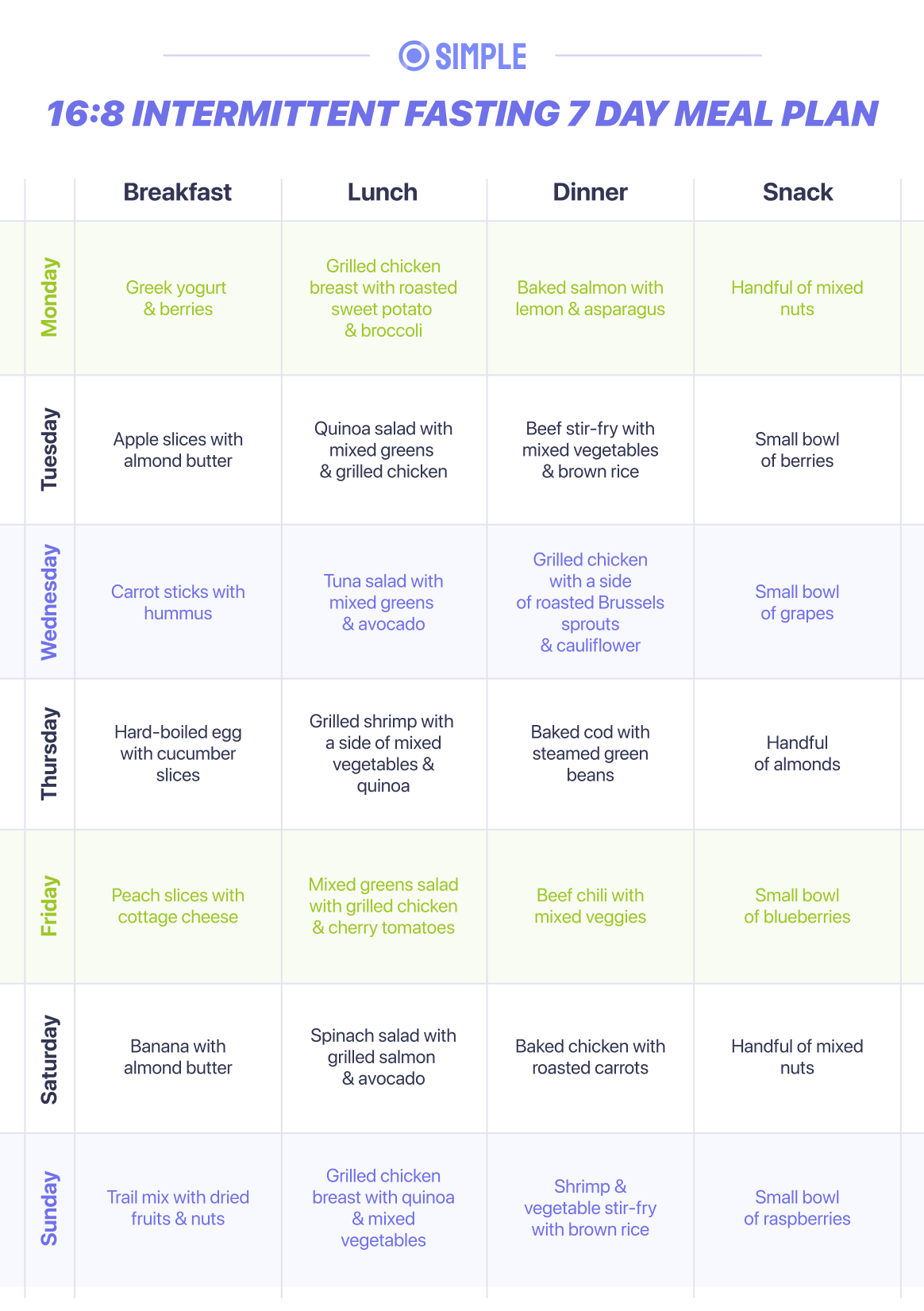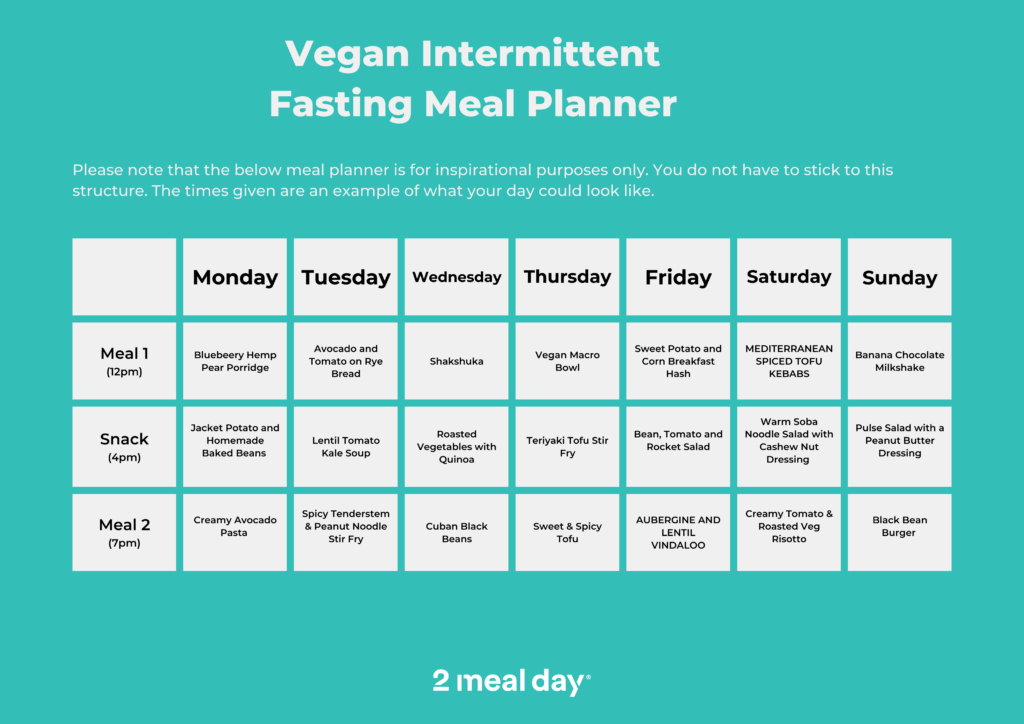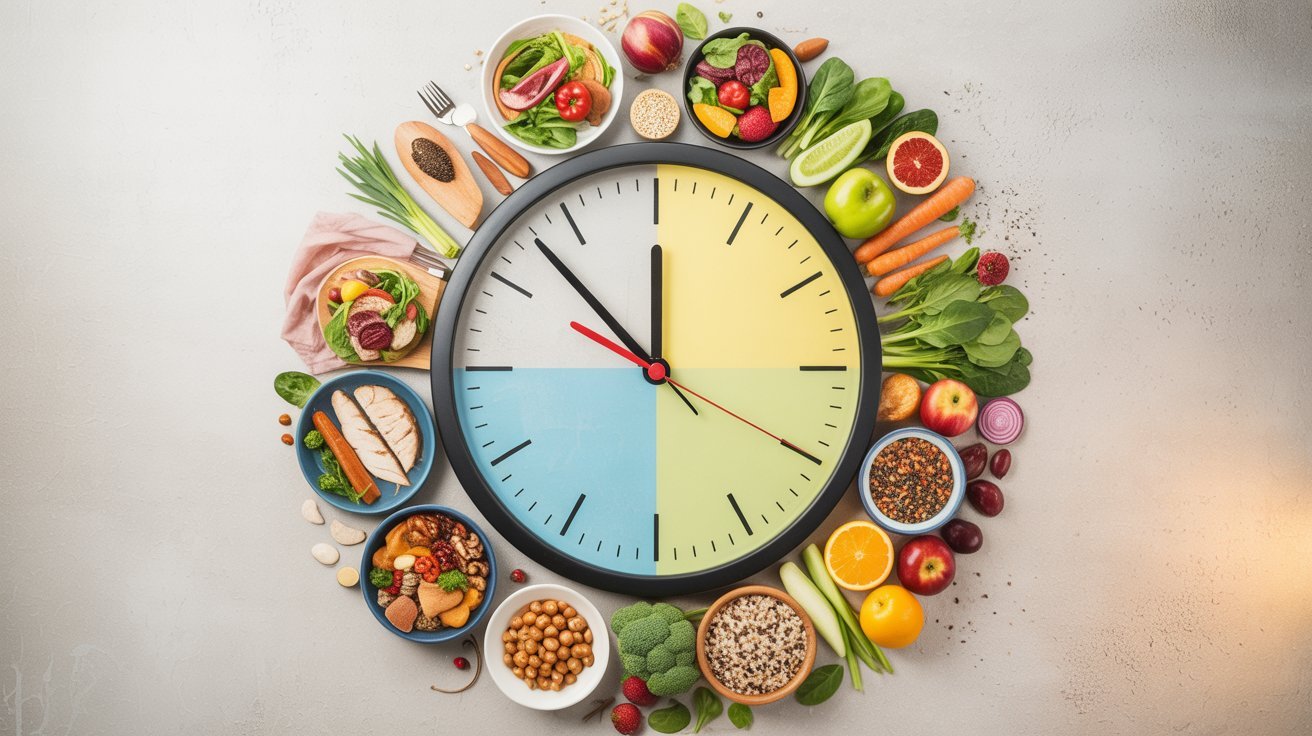Intermittent fasting is more than just a diet. It’s a lifestyle change.
Have you ever wondered how to plan your meals while fasting? Intermittent fasting has gained immense popularity for its health benefits. It involves eating within a specific time window and fasting for the rest of the day. This eating pattern can help with weight loss, improve metabolism, and even enhance mental clarity.
But how do you start? What should your diet look like during eating hours? This blog will guide you through an effective intermittent fasting diet plan. You’ll learn how to structure your meals, what foods to include, and how to maximize the benefits of intermittent fasting. Stay tuned to transform your health journey.

Credit: simple.life
Introduction To Intermittent Fasting
Intermittent fasting is a way to eat. It cycles between eating and fasting. The goal is to give the body time to burn fat. People do this by not eating for a set time. Common times are 16 hours of fasting and 8 hours for eating. This method helps control hunger and weight. It also improves health and energy levels.
Fasting has been around for ages. Ancient people did it for health and spiritual reasons. Many religions include fasting practices. It was not a diet but a way of life. Over time, scientists studied it. They found it has many benefits. Now, many people use it to stay healthy and fit.
Health Benefits
Intermittent fasting helps with weight loss. It reduces the number of meals eaten. This leads to lower calorie intake. Fasting periods increase the body’s fat burning. Stored fat is used for energy. The body becomes more efficient.
Fasting can boost your metabolism. It improves insulin sensitivity. This helps the body use glucose better. Energy levels remain steady. Digestion becomes more efficient. Less bloating and discomfort.
Intermittent fasting can benefit brain function. It increases the production of brain hormones. These hormones protect against stress. Memory and learning improve. Fasting also reduces inflammation in the brain.
Types Of Intermittent Fasting
This method is popular. It involves fasting for 16 hours. Eating is allowed during the 8-hour window. Many people skip breakfast. They eat lunch and dinner. This can help reduce calorie intake. It may also improve focus and energy.
Eat normally for 5 days. Limit calorie intake for 2 days. On fasting days, consume 500-600 calories. It is easier for many people. They can enjoy their favorite foods most days. Helps in weight loss and overall health.
Fast for 24 hours once or twice a week. Eat normally on non-fasting days. Drink water, tea, or coffee during fasting. Helps reduce calorie intake. Can be challenging at first. Gradually becomes easier over time.

Credit: 2mealday.com
How To Start
Pick a fasting plan that fits your lifestyle. Popular methods include the 16/8 and the 5:2. The 16/8 means fasting for 16 hours and eating in an 8-hour window. The 5:2 method involves eating normally for 5 days, then eating only 500-600 calories on 2 days.
Start with small goals. Aim to fast for 12 hours at first. Gradually increase the fasting time as you get used to it. Remember, it’s important to listen to your body. If you feel tired, take a break.
Keep a journal or use an app to track your fasting. Note how you feel each day. Record your energy levels, mood, and any weight changes. This helps you see progress and stay motivated.
Eating Windows
Intermittent fasting diet plans often include “eating windows. ” These are specific hours when you can eat. This approach helps manage calorie intake and supports weight loss goals.
Optimal Eating Times
Choosing the right eating window is key. Many prefer an 8-hour window. For example, eating from 12 PM to 8 PM works well. Others may choose a 10-hour window. Like 10 AM to 8 PM. It depends on your lifestyle. Experiment with different windows. Find what works best for you. Stick to the same hours each day. This helps your body adjust.
Healthy Meal Ideas
Eating healthy meals during your window is important. Start with a balanced breakfast. Include proteins, healthy fats, and fibers. For lunch, try a big salad. Add lean meat or beans. Dinner can be a mix of vegetables and whole grains. Avoid processed foods. Drink plenty of water. Snack on fruits and nuts. Keep portions reasonable. Enjoy your meals slowly. This helps with digestion.

Credit: www.pinterest.com
Common Challenges
Intermittent fasting can be challenging due to hunger pangs and cravings. Social situations and busy schedules make sticking to the plan difficult. Energy fluctuations may impact productivity and mood.
Hunger Pangs
Hunger pangs can be tough. Drinking water helps. Herbal tea works too. Protein-rich snacks are good. They keep you full longer. Avoid sugary snacks. They make you hungrier. Distract yourself with hobbies. Exercise can reduce hunger as well.
Social Situations
Social events can be tricky. Communicate your plan. Friends may support you. Choose healthier options at gatherings. Eat before you go out. This helps you avoid overeating. Practice saying no politely. Offer to bring your own food. This ensures you have healthy choices.
Maintaining Consistency
Consistency is key. Create a schedule. Stick to it daily. Set reminders on your phone. Track your progress. Use apps if needed. Celebrate small wins. Stay patient. Results take time. Join a support group. They can help keep you on track.
Safety And Considerations
Pregnant women should not fast. It can harm the baby. People with eating disorders should avoid fasting. It can worsen their condition. Those with chronic illnesses should seek advice before starting.
Consult a doctor before starting a new diet. This is important if you have any health issues. A doctor can help you make safe choices. Always consider your personal health needs.
Fasting can cause headaches and fatigue. You might feel irritable or have mood swings. Some people experience digestive issues. Drink plenty of water to stay hydrated.
Success Stories
Many have shared their positive experiences with intermittent fasting. One person lost 30 pounds in 3 months. Another felt more energetic and focused. Some noticed better sleep and less stress. These stories inspire others to try fasting.
Several celebrities support intermittent fasting. Jennifer Aniston follows this diet. Hugh Jackman used it for movie roles. Kourtney Kardashian also praises it. Their endorsements make the diet more popular. Celebrities sharing their success gives people confidence.
Studies show many health benefits of intermittent fasting. Research indicates improved metabolism. Blood sugar levels get better. Fasting might reduce inflammation. These studies provide strong evidence. Science supports the benefits of this diet.
Frequently Asked Questions
What Should I Eat During Intermittent Fasting?
Eat nutrient-dense foods like vegetables, lean proteins, healthy fats, and whole grains. Drink plenty of water. Avoid sugary and processed foods.
How Much Weight Can You Lose In A Month With Intermittent Fasting?
You can lose 4 to 8 pounds in a month with intermittent fasting. Results vary based on diet and exercise.
How Do You Start Intermittent Fasting?
Start intermittent fasting by choosing a fasting method, like 16/8. Gradually increase fasting hours. Stay hydrated. Eat balanced meals. Listen to your body.
What Should My First Meal Be When Intermittent Fasting?
Start with a balanced meal including lean protein, healthy fats, and complex carbs. Examples: grilled chicken, avocado, and quinoa.
Conclusion
Intermittent fasting offers many health benefits and fits busy lifestyles. It can help with weight loss and improve overall well-being. Start slowly and find a schedule that suits you. Listen to your body and stay hydrated. Consistency is key. Consult a doctor before making big changes.
With patience and dedication, intermittent fasting can become a rewarding habit. Give it a try and see the benefits for yourself.








